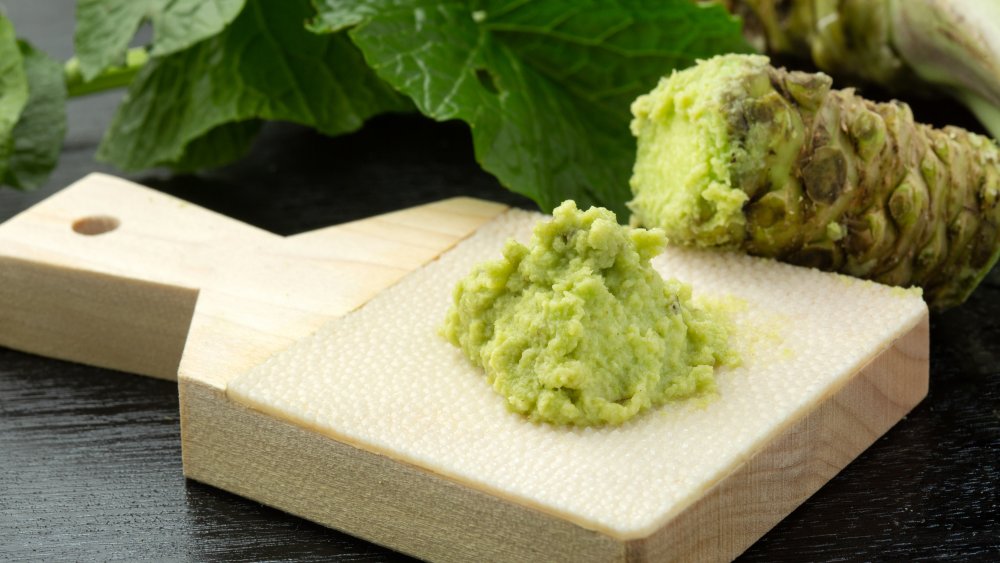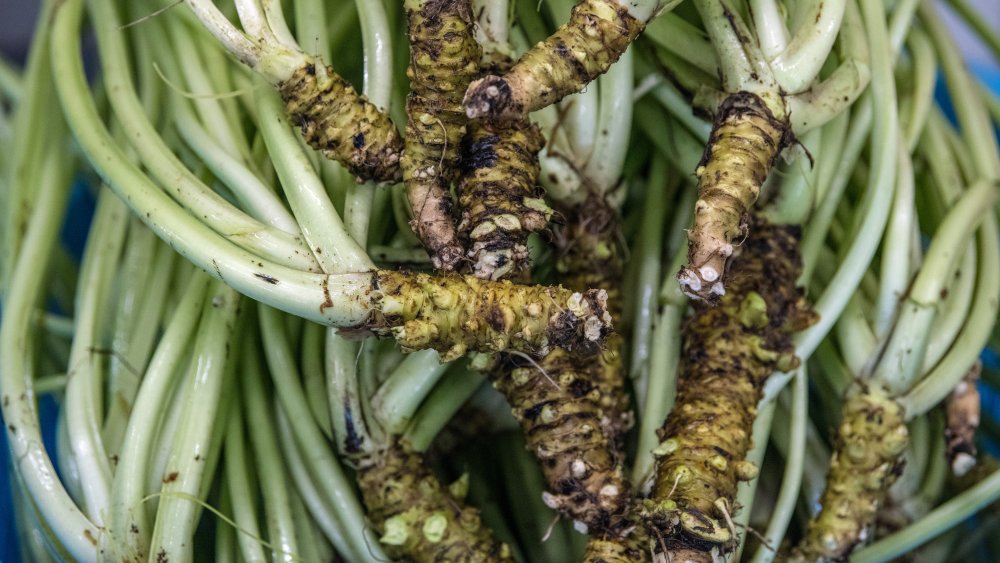The Real Difference Between Wasabi And Horseradish
As the popularity of sushi has grown, so has the prevalence of wasabi – including counterfeits. As HuffPost breathlessly announced in 2015, some restaurants and allegedly wasabi-flavored snacks substitute a mixture of horseradish, mustard, and food coloring for the real thing. Even in Japan, finding wasabi without traces of horseradish is rare. The swap works due to the fact that wasabi and horseradish are related to each other. Both belong to the Brassicaceae family, which also includes more distant cousins like cabbage and broccoli. As Foodal explains, they are indeed different species, so a one-to-one swap isn't possible. Moreover, we eat them differently. With wasabi, we chew on the stem; horseradish is made from the root.
According to World of Wasabi, wasabia japonica one of the plants that's part of the confusion. The writers suggest that the Japanese hid the wasabi plant during the Alliess' occupation following World War II and served seiyo wasabi, or western wasabi. Over the years, the "western" was dropped.
Conspiracy theories aside, however, the most plausible reason for the switch, as ChowHound explains, is that growing wasabia japonica is an absurdly tricky enterprise, meaning that it would be economically unfeasible to grow it at the scale people consume seiyo wasabi.
The root of the problem
In 2014, the BBC reported that a kilogram of wasabi — about 2.2 pounds — was worth $160. That, simply, is why we eat horseradish instead. The reason for the high price of wasabi is because it grows in a very specific environment. "It's a water loving plant, but it does not grow completely submerged in water like a water lily or something," Professor Carol Miles of the Department of Horticulture at Washington State University explained to Kim Gittleson. "In general, water flows over the crop, so it's grown in water beds and that's not something we commonly do in North America."
Nor is it common in Japanese agriculture, either, in part due to the country's population density. With Japanese land already maxed on wasabi production, farmers in the Pacific Northwest have started their own wasabi farms. The most successful has been Brian Oates of Pacific Coast Wasabi Ltd., interviewed by both the BBC and Canada's The National Post. Instead of cultivating the wasabi in mountain streams, they created a system within greenhouse conditions to replicate the water covering that wasabi requires. Their focus has been to produce wasabi for biomedical purposes, because all the wasabi in Japan gets sold for cooking. But for $100, you can purchase a fresh wasabi weighing 250 grams — about half a pound. For the foreseeable future, it seems we'll be sticking with the horseradish substitute.

